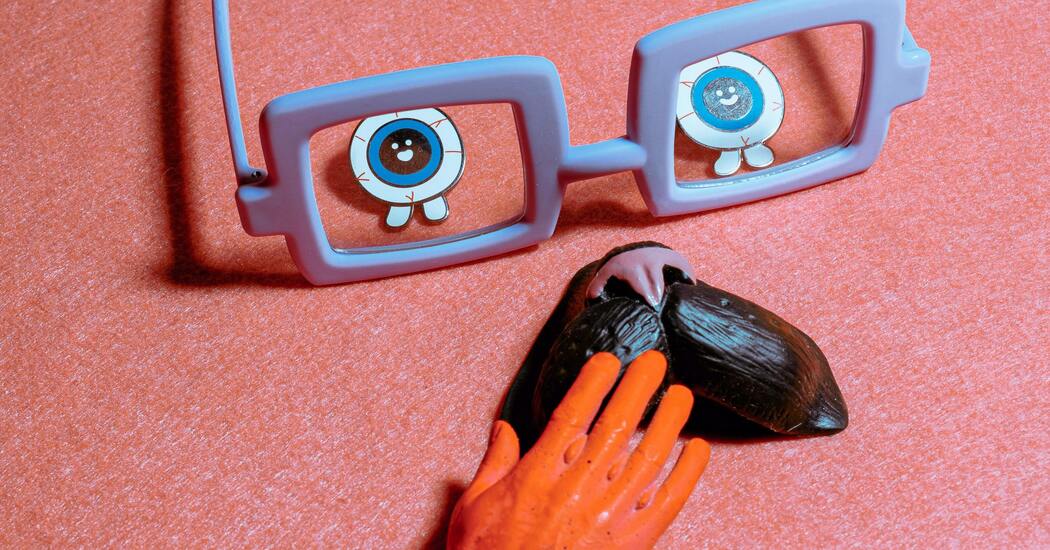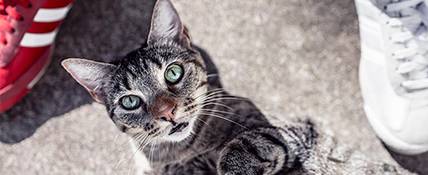Brand stories mingle with great History. Their roots, their origins, their successes and even their missteps are not trivial. Brands say a lot about us. Why not look at these, who, whether denigrated or adored, founded our society? 🚀 This is the project that the We Are COM team undertook by publishing its first book The little secrets of the big brands (Dunod edition) illustrated by the creative studio The Twins and prefaced by Hervé Navellou, Managing Director of L'Oréal France and President of the Union of Brands.
🤓 And because at We Are COM we are curious and eager to always learn more, we have dedicated a workshop of our - French stratégies big brands and their little-known anecdotes. ✨ Communicators, here is the ideal cheat sheet to shine at the coffee machine!
#1 – Brands play with the arts
The Chupa Chups logo was designed by Salvador Dali
And this logo. signed by the great Spanish artist has undergone almost no modification since its creation in 1969. History has it that on this date, the logo was designed by Dali, on the terrace of a café, on the corner of a newspaper and in less than an hour. This genius of surrealism, passionate about advertising, participated in numerous communication campaigns : Bryans Hosiery tights, Datsun cars, Perrier sparkling water or even the unforgettable advertisement for Lanvin chocolates, “I'm crazy about Lanvin chocolate" he said.
🍭 Coming back to Chupa Chups, did you know that it was Dali himself who had the ingenious idea of placing the logo on the top of the lollipop to make the visual more impactful for the consumer?
Air France uniforms are designed by Christian Lacroix
Since its creation, the airline seeks to promote French chic. Originally, the cabin crew wore uniforms inspired by luxury hotels: white jacket, navy pants and spencer collars. It was in 1945 that Air France embarked on its first Haute-couture partnership with Georgette Rénal and her wardrobe for “Mistresses of the Flying House”. Then the partnerships followed one another: Georgette de Trèze, Marc Bohan for Dior, Cristobal Balenciaga, Nina Ricci, Carven and Louis Féraud.
From 2005, fashion designer Christian Lacroix dressed the company's hostesses and stewards. 🤩 He also declared: “We recognize an Air France crew among a thousand and in any airport in the world."
#2 – Inspired Origin Brands
Armor Lux dresses French workers
We stay in Brittany with the Armor Lux brand, which means “Sea” and “Light” in its native language. Do you know what SNCF, Indigo, Carrefour, Monoprix, La Poste, Chronopost, DPD and many others have in common? Their team uniforms come from Finistère and are made by Armor Lux. Originally, this company was a simple button-up shop, specializing in lingerie and underwear. It was only after a slowdown in activity, notably explained by the Second World War, that the founder of the brand, Walter Hubacher, decided to tackle ready-to-wear.
🇫🇷 Today, the company is labeled “Living Heritage Company”, a distinction awarded to French companies of artisanal know-how and industrial excellence.
Nike refers to the goddess Nike
Nike is the Greek goddess of victory, a winged deity capable of moving at incredible speed. 💫 Moreover the “swoosh”, Nike's famous moving logo which was allegedly designed by a graphic art student and sold to the brand for only 35 dollars, symbolizes both this divine speed and speed.
As to slogan Nike, do you know its history? The expression “Just do it” comes from the last words of death row inmate Gary Gilmore, “Let's do it”. This powerful statement is said to have inspired the American advertising agency Wieden an Kennedy. Today “Just do it” is itself a registered trademark.
#3 – Brands adapt to cultural codes
Initially Amazon was called Cadabra
Jeff Bezos initially wanted to name his brand Cadrabra, in reference to the term “Abracadabra”. According to him, the magical aspect of the latter perfectly illustrated the magical side of his site, which made it possible to order and receive a book in a few clicks. However, on the line, his lawyer then heard the English word “cadaver”, or “corpse”. 📞 Jeff Bezos had to review his copy… And this is how the name of the famous company became Amazon, in reference to the largest river in the world. The advantage was that, starting with the letter “A”, Amazon appeared in the TOP rankings. Practical for referencing in website directories.
Captain Haddock drinks Loch Lomond whiskey
The brands are represented even in the comics, since Hergé makes his irascible Captain Haddock drink Loch Lomond whiskey. 🥃 This brand appears in several albums, without having ever sponsored the Belgian author. We explain why. Initially, the whiskey present in “The Black Island” was Johnnie Walker. Until the day when an English publisher, fearing legal reprisals, asked Hergé to include a fictitious brand in his comics. The latter then chooses randomly name a Scottish lake, without knowing that two years earlier, a distillery of the same name had opened on the shores of this lake. In summary, the brand was ultimately not fictitious and the Tintin albums were a communication boon for Loch Lomond whisky.

#4 – Brands become cultural references
The Lacoste crocodile comes from the nickname of René Lacoste
In 1927, France won the Davis Cup for the first time, thanks in part to the quartet “the 4 musketeers”, which included a certain René Lacoste, nicknamed “the alligator” in reference to his favorite animal. 🐊 It is to the latter that we owe the invention of the polo shirt. Indeed, René Lacoste, believing that the long-sleeved shirt was not optimal for playing tennis, decided to cut off the sleeves. To preserve the sporty chic in force at the time, he added a shortened buttonhole to this customized shirt, directly inspired by the London outfits of polo players. On his new invention, Lacoste sews a small crocodile, a signature which will become the iconic symbol of the brand. Today, two Lacoste polo shirts are sold every second in the world.
The voice of the SNCF is called Simone
You all know the voice of the SNCF announcements, but did you know that it is that of Simone Hérault? Don't worry, this former radio presenter doesn't record every announcement. It simply records words, which it declines according to 3 intonations, depending on their places in the sentence. Staying on the sound theme, did you know that the jingle from the railway company, “ta-ta-ta-da”, had become a real rock song, thanks to David Gilmour, former Pink Floyd guitarist? It was while boarding a train in Aix-en-Provence that he fell in love with these four notes. 🎸 Shortly after buying the rights, he released the song “Rattle that lock”, a 100% SNCF jingle composition.
#5 – Brands are reinventing their model
Danone sold its products in pharmacies
It was by carrying out studies on the fermentation of milk that Danone developed its first yogurt recipe. 🍶 "Delicious and healthy, Danone is the dessert of happy digestion”, advocated the brand then sold in pharmacies. The adventure began in Spain, when Isaas Carasso introduced the first yogurts in the country. He presented his products as excellent means of combating childhood intestinal infections.
Later, the brand will take advantage of the collapse of the USSR and the fall of the Berlin Wall to export its products to Eastern countries, and even as far as Moscow. Günter Mauerhaufer, then responsible for developing the brand, explained: “ In the communist economy, there was no concept of brand. We had to adapt with advertising which was also an innovative context. For example in Poland, we created the first logoed tram, painted blue with the Danone logo"
Finally, if Danone is called that, it is in homage to Isaac Carasso's son, little Daniel, whose nickname was Danon in Catalan.
Monopoly was dreamed of as an anti-capitalist game
Today this may seem paradoxical for a game whose objective is to build your fortune by ruining your opponents. And yet, in 1904, the ancestor of Monopoly, the Landlord's game was patented by Elizabeth Magie with the aim of criticizing the system of real estate rents and raising children's awareness of this phenomenon. The game then included 2 modes, one favoring cooperation and the other favoring capitalism.
Everything changed in the 30s, when the games publisher Parker Brothers bought the rights to Landlord's games for only $500. Monopoly is then marketed, with the rules that we know today. 💰 Since then, the game has sold more than 200 million copies, making it the best-selling board game in history.
And to increasingly take the opposite view from its anti-capitalist ancestor, Monopoly has recently been available in versions such as “Monopoly for Cheaters” or even “Monopoly for Bad Losers”.
#6 – Brands get involved
Cartier joined the French Resistance.
As early as 1940, during the occupation of Paris by Nazi troops, the Cartier house chose to resist. How ? Very subtly, through a range of jewelry. At the time, the jeweler Jeanne Toussaint, also nicknamed “the panther”, provokes the occupants with her creations of “birds in a cage”. After an arrest and a violent interrogation, Jeanne Toussaint was finally released for lack of evidence. Just like his birds from 1944, which free themselves from their cages in the jeweler's windows, symbols of victory. 🕊
In 1942, Cartier also made small 6-pointed star brooches, as a sign of support and solidarity with the Jews who were then persecuted.
Finally, Jacques Cartier, himself, got involved in the Resistance from his London home, which had hosted the recording of several speeches by General de Gaulle.
Bourjois is committed to the emancipation of women
Since its beginnings, the cosmetic brand has been committed to women. At the end of the 19th century, Bourjois fought to democratize makeup, a time during which this maligned practice was reserved for theater actresses and touts. The “Rouge fin de Théâtre” range, available in blush, eyeshadow, lipstick… combats preconceived ideas and liberates women. Still at the same time, Bourjois is trying to make the daily lives of its customers easier by releasing the very first pocket makeup kit called “The friend of women”.
In 1936, the brand went much further in its commitments with the “Women will vote” campaign, representing Marianne going to the polls. 🙌 In other words, around ten years before the right to vote was granted to women, the brand was already calling for it loud and clear.
And here is the final word: autonomasia. 🤔 Quésaco, you say to yourself? Antonomasia is the figure of speech which consists of using a proper noun as a common noun. Brands are not immune to this phenomenon of appropriation. The list is long and sometimes surprising. Mobylette, Bic, Frigidaire, Botox, Jacuzzi, Post-it, Carte-bleue, Cotton swab, Stainless steel, Sucrette, Jet-ski and even Interphone are brands!
🤓 Want to discover new anecdotes and learn more about brand strategies? The We Are COM team invites you to browse its work: The little secrets of the big brands (Dunod edition). 🚀 Happy reading!






